Are any animals taller than giraffes? Research suggests that no living animal exceeds a giraffe in height. The average height of an adult giraffe is 20 feet (19.7ft). The nearest competitors are African elephants (13.1 feet) and Siberian tigers (12.1 feet). To learn about past tall animals, we must travel through time to periods in which now extinct animals shared the planet. Along the way, we find that giraffes still would tower over most dinosaurs! Let’s learn about the five incredible animals that were taller than giraffes!
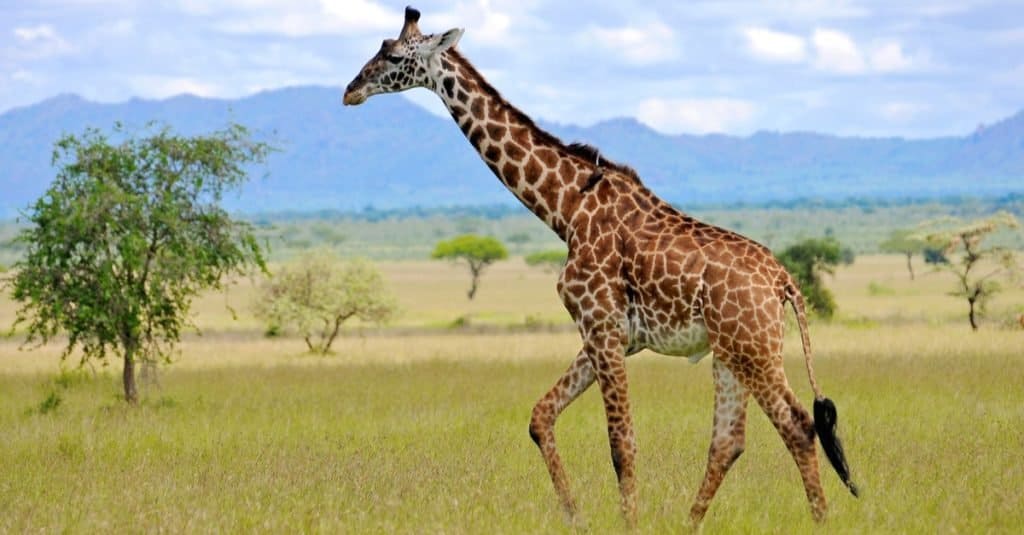
Giraffes spend most of their lives standing up; they even sleep and give birth standing up.
©PLANET EARTH/Shutterstock.com
1. Sauroposeidon
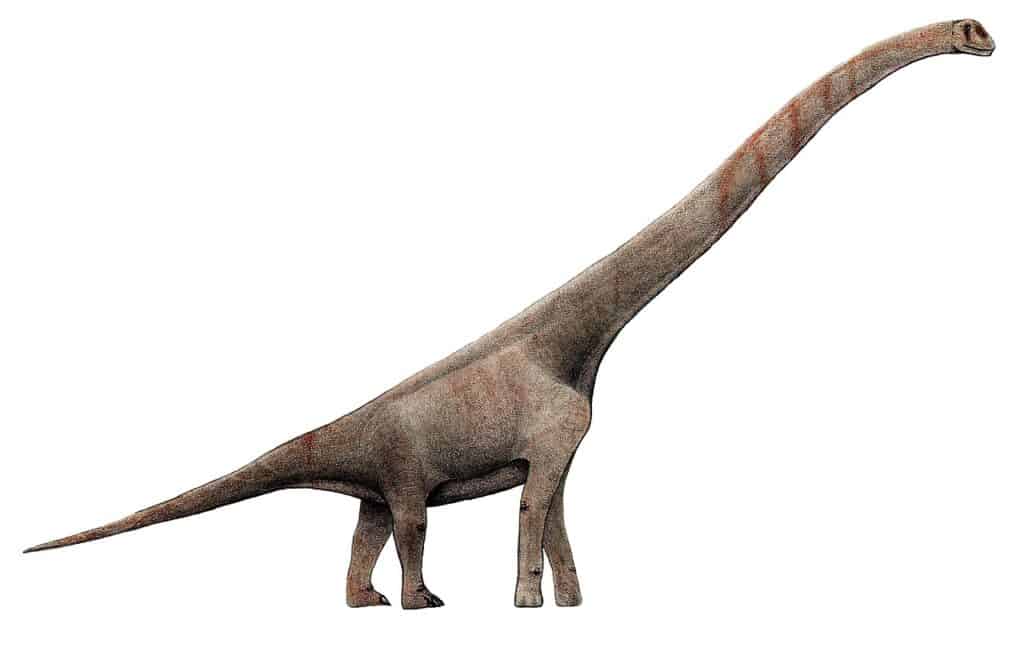
The longest neck bone of a sauropod was 1.4 meters long (4.6 feet).
©Levi bernardo / CC BY-SA 3.0 – License
There are a few partial fossils of the sauropod dinosaur genus Sauroposeidon. They were found in Texas, Oklahoma, and Wyoming. Four mid-cervical vertebrae and cervical ribs that moved were found with Sauroposeidon. The longest neck bone of a sauropod was 1.4 meters long (4.6 feet). Like chicken or ostrich bones, the bones are thin and honeycombed with small air cells. This makes the neck lighter and easier to lift, helping it to elongate. Sauroposeidon could raise its head 16.5–18 m (54–59 ft), or six stories, off the ground. Sauroposeidon, a brachiosaurid, is 6-7 m tall at the shoulders (20-23 ft). The length of the longest rib was 3.42 m. (11.2 ft). It could be 27 to 34 meters (112 ft) in length from head to tail!
2. Apatosaurus
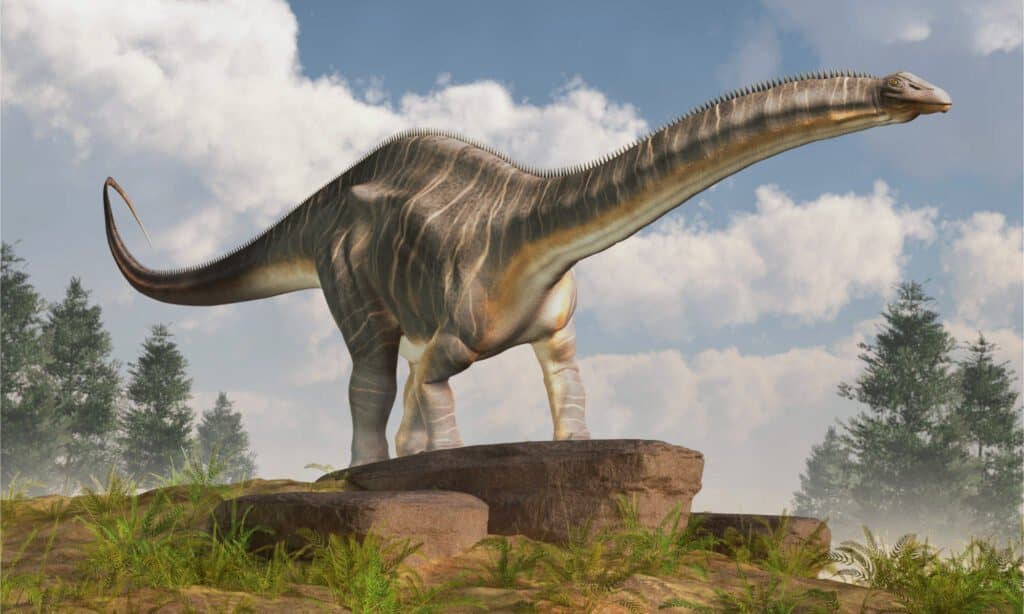
Apatosaurus and other Sauropods had long necks and even longer, whip-like tails.
©Daniel Eskridge/Shutterstock.com
The herbivorous sauropod dinosaurs known as Apatosaurus (the name means “deceiving lizard”) existed in North America dating back to the later Jurassic period. The Apatosaurus was an enormous dinosaur that walked on all fours and had a long neck and whip-like tail. Its forelegs were shorter than its hind ones. The standard length and weight ranges for A. louisae are based on the size of the type specimen, which is 21–23 m (69–75 ft) and 16.4–22.4 t, or 16.1-22.0 long tons and 18.1-24.7 short tons.
Apatosaurus, another diplodocid, had substantially thicker and longer leg bones than Diplodocus. This evidence favors the conclusion that Apatosaurus was more powerful than Diplodocus. The vertebrae in an Apatosaurus’ neck are shorter and more robustly constructed than those of a Diplodocus’. The normal movement was maintained while the tail was held off the floor. The Apatosaurus possessed one claw on each of its front legs and three on each of its hind legs.
Apatosaurus, whose head was formerly supposed to resemble that of Camarasaurus, now appears to have a more distinct Diplodocus appearance. The air sacs that created holes in Apatosaurus’s vertebrae allowed the animal’s backbone to weigh less. It’s possible that, like the tails of other diplodocids, it was utilized as a whip to generate loud noises, or, more recently thought, as a sensory organ.
3. Sonorasaurus
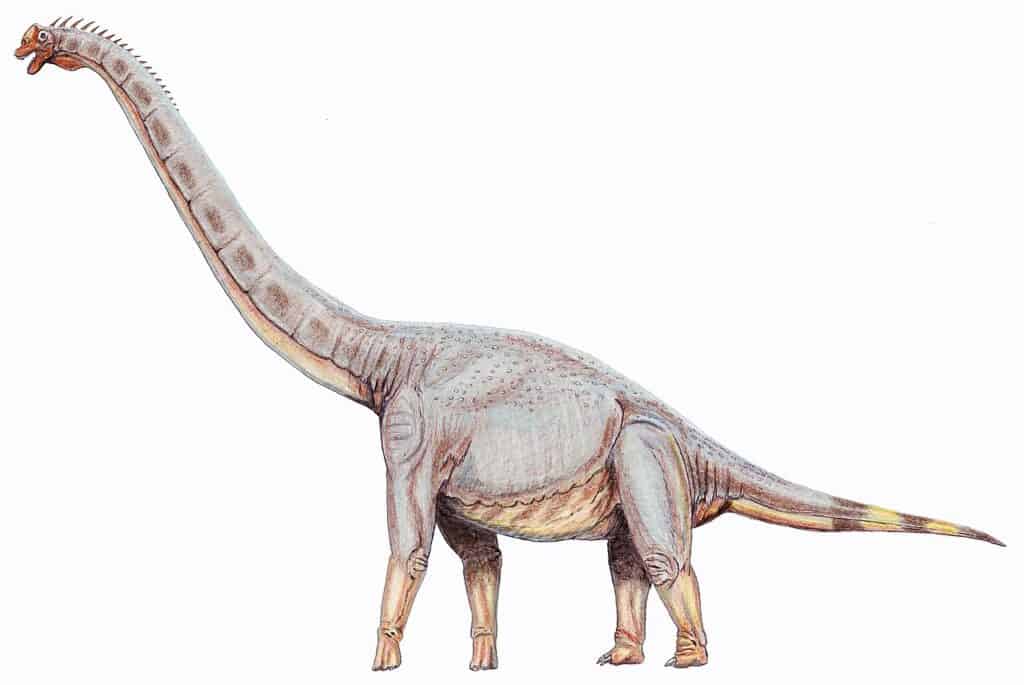
Sonorasaurus was a massive dinosaur from the Cretaceous era
©Creator:Dmitry Bogdanov / CC BY 3.0 – License
The Sonorasaurus belonged to a group of dinosaurs that lived throughout the early to late Cretaceous and were classified as brachiosaurids (around 100 million years ago). These herbivorous sauropod fossils were found in southern Arizona, USA. The fossils of this reptile were discovered in the Sonoran Desert, hence the “Sonora lizard” moniker.
The postcranial components of the holotype skeleton of Sonorasaurus are numerous and fragmented. Only 15 meters (49 feet) in length and 8 meters (26 feet) in height, this dinosaur was about a third the size of Brachiosaurus.
4. Brachiosaurus
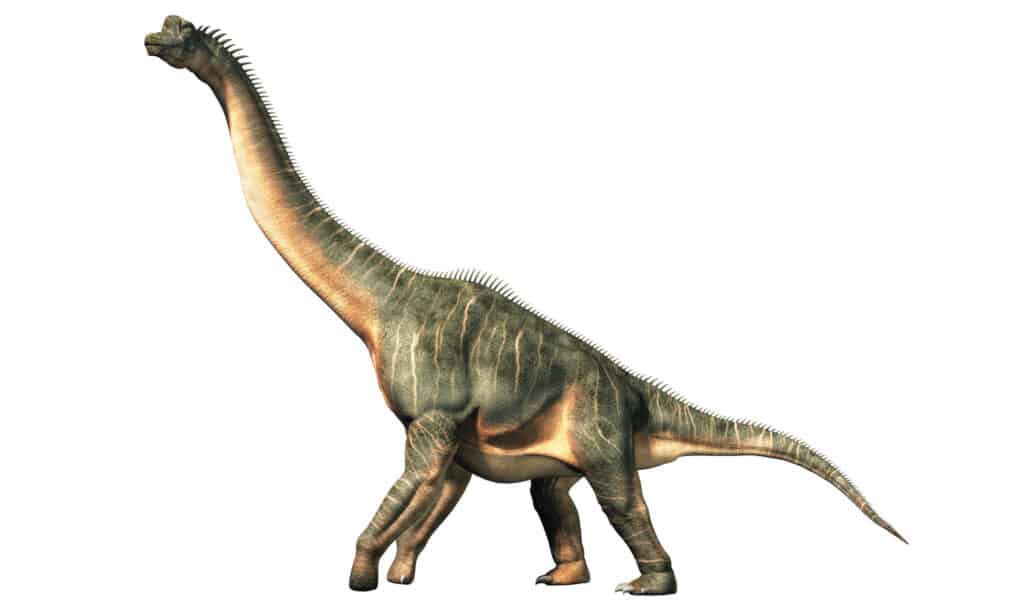
Paleontologists originally believed that brachiosaurus lived in the water.
©iStock.com/Daniel Eskridge
Another animal taller than giraffes was Brachiosaurus. Brachiosaurus dinosaurs existed in Late Jurassic North America. A paleontologist originally characterized it in 1903 using fossils from Western Colorado along the Colorado River. Riggs named this dinosaur Brachiosaurus alti thorax for its deep chest and long arms. Most estimates of Brachiosaurus alti’s thorax size are based on Giraffa titan (formerly B. brancai), which is better known than Brachiosaurus.
Complete fossils of both of these animals show that they were the largest brachiosaurids yet found. The original, and most complete specimen of the North American Brachiosaurus shows signs of being a juvenile. This includes an unfused junction between the coracoid (a bone of the shoulder girdle that works as part of the shoulder joint) and the scapula.
Different sources place the holotype specimen’s mass somewhere between 28.3 and 46.9 metric tons (31.2–51.7 short tons). Inaccuracy and large margins of error led researchers to challenge Benson et al’s maximum body mass estimates of 56 and 58 metric tons (62 and 64 short tons). Paul claims that the length and height of Brachiosaurus ranged from 20 to 22 meters (66 to 72 feet) and 18 to 59 feet, respectively (39–43 ft).
5. Tyrannosaurus Rex
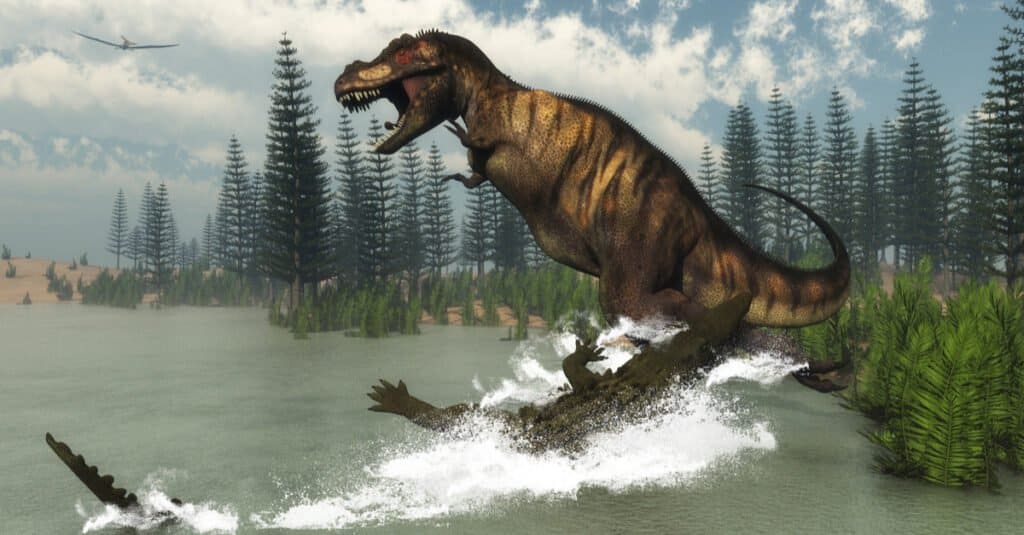
T. Rex is the best-known dinosaur to have lived.
©Elenarts/Shutterstock.com
The most well-known dinosaur, often known as the T-Rex, was a theropod dinosaur. Tyrannosaurus rex once roamed the western part of what is now North America, on the island continent of Laramidia. The ranges of other tyrannosaurids were far less than that of Tyrannosaurus. Numerous rock formations dating back to the Maastrichtian epoch of the Upper Cretaceous period (about 68–66 million years ago) include fossils. Before the mass extinction that occurred at the end of the Cretaceous period and the beginning of the Paleogene period, this tyrannosaurid was one of the last remaining non-avian dinosaurs.
The Tyrannosaurus rex was an enormous land predator. Sue, one of the largest and most complete examples, resides in the Field Museum of Natural History. Sue measured 12.3 to 12.4 meters (40.4 to 40.7 ft) in length and was 3.66 to 3.96 meters (12 to 13 ft) tall at the hips. Using a variety of methods, the most current studies have estimated Sue’s maximum body weight to be roughly 8.4 metric tons (9.3 short tons). The 13 meters (43 feet) long specimen known as Scotty is housed in the Royal Saskatchewan Museum.
The photo featured at the top of this post is © Craig Fraser/Shutterstock.com
Sources
- Britannica, Available here: https://www.britannica.com/animal/dinosaur
- Wikipedia, Available here: https://en.wikipedia.org/wiki/Dinosaur
Thank you for reading! Have some feedback for us? Contact the AZ Animals editorial team.






